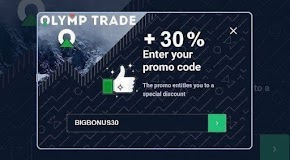Forex orders - Market, Limit, Stop Loss, Take Profit

Types of Forex orders - after examining the basic concepts, let's briefly discuss how a trade is opened, and look at a few basic ways of controlling risk and managing our funds.
While most Forex trading software is straightforward with order entries and the opening or closing of a position, the beginner may be bit confused by terms like Stop Loss, Market, Limit, Trailing Stop, or Take Profit orders, at least a basic understanding of which is crucial for a properly managed forex account .
Different types of Forex orders explained
Market Order
A Market order instructs the broker to buy or sell a currency at the current market price. As such, neither the trader, nor the broker has any control over where the trade is executed. The only commitment that the broker makes is that the order will be executed as soon as possible, which is usually instantly. Let us note here that in times of market turmoil, spreads can widen greatly, and the price at which a Market order is executed can be shocking to the inexperienced trader. Consequently, it is a good idea to avoid Market orders at such periods.
Limit Order
By contrast, a Limit order instructs the broker Forex to execute a trade only when a particular price value is reached. No action will be taken until the price quote is reached, regardless of the length of time. The disadvantage of the Limit order is that the market may never move in the desired direction, and the trade may never be executed as a result. On the other hand, the Limit order facilitates better planning, reduces arbitrariness in trading decisions, and eliminates the dangers associated with sudden price spikes to the greatest extent possible.
Stop Loss Order
The Stop Loss (SL) order is a kind of safety mechanism that puts a ceiling over the losses that a misplaced trade can cause. By entering the Stop Loss order, we're specifying the maximum amount of unrealized losses that we are willing to tolerate, beyond which our confidence in the trade would not be maintained. Naturally, the stop-loss order should be set in the direction opposite to where we expect the price quote to move. The execution of a Stop Loss order, as with the limit buy or sell orders, is automatic.
Trailing Stop Order
The Trailing Stop order is a relatively uncommon order type. In this case, the Stop Loss order is renewed automatically by the fx trading software at intervals specified by the trader. For instance, when we buy the EUR/USD pair at 1.3500, set our Stop Loss order at 1.3400, and set the period of the Trailing Stop at 50 pips, the software will revise our Stop Loss order higher at intervals of 50 points as the price moves and our account shows unrealized profits. When the price reaches 1.3550, our new Stop Loss would be entered automatically at 1.345. When the price reaches 1.36, the new SL would be at 1.35, ensuring a risk-free trade.
Take Profit Order
The Take Profit (TP) order specifies the price quote at which we would like our position to be closed, and profits to be realized.
See a review of the ranking of the Best Forex brokers , Best FX apps in 2025.
See also:
How to choose a Forex broker
Forex trading tips
Forex trading basics you should know
Forex economic calendar
Forex bonus
Olymptrade review
VIP status Olymptrade
Olymptrade registration
Login Olymptrade forex
Demo Forex on Olymptrade
Forex training
Olymptrade platform review
Olymptrade app for Android IOS
Make money Olymptrade







